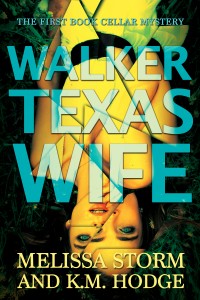On Co-Writing
 For better or for worse, co-writing is a sort of marriage and therefore should not be entered into lightly. A quick Google search will tell you that there really isn’t a lot out there regarding how-to tips. My co-author, Melissa Storm, and I had to learn a lot by trial and error. From this experience, I have some points to ponder before you agree to join in contractual co-writing-mony.
For better or for worse, co-writing is a sort of marriage and therefore should not be entered into lightly. A quick Google search will tell you that there really isn’t a lot out there regarding how-to tips. My co-author, Melissa Storm, and I had to learn a lot by trial and error. From this experience, I have some points to ponder before you agree to join in contractual co-writing-mony.
Personality:
When you write a book with someone, you see them at their best and worst–mostly their worst. How long and well do you know this other person? Melissa and I had been internet friends for about a year. We frequently asked each other for professional input on our various projects. I am also one of Melissa’s early readers. (If you haven’t read something by your intended partner, do that first before you do anything!)
Though Melissa and I haven’t known each other that long, we admire and appreciate what the other person brings to the table. This may be the most important aspect of the co-writing relationship. It needs to be an equal win for both sides. Melissa and I are also very blunt and upfront with each other whenever there is a problem. This is our greatest strength as a team. If you can’t successfully resolve disagreements, do not enter into a co-writing relationship.
One way to see how your personalities work together is to compare and contrast your Myers Briggs Personality types. Melissa is an INTJ and I am an ENTJ. These are very rare personality types for women, but complement each other. We are both very hardworking and dedicated. We would also make the best villain duo of all time! Seriously, world domination might be next on our list of projects.
Style of Writing:
Is your style of writing similar or at least complementary? Melissa and I are both exposition-heavy. Our writing blends so well that even those close to us couldn’t tell who had written what. Does one of you write wonderful exposition and the other snappy, realistic dialogue? These skills are complementary and will–if you are open-minded enough–help you to improve your own writing. I have seen a marked difference in the way Melissa and I both write. We play to each other’s strengths and learn from each other. It’s a win-win for the both of us.
Melissa is very good at character building and I am very good at building plots (which is funny because I often pants my personal projects). We learned these were our strengths when we wrote our first novel together, Walker Texas Wife. It helped inform us as to what we would do differently for the second book in our series.
If your styles don’t match, how can you make that work to your advantage? Will you write varying points of view? Be creative and think outside the box and you might be surprised at the amazing things you might come up with.
Writing Process:
Knowing your writing process requires a lot of self-awareness. It’s not something you generally think about. When you co-write, though, this could make or break the success of your project. This is an area where Melissa and I had the most challenges. She is a plotter who works best under pressure and therefore often writes in huge chunks at a time. I am a take-my-time pantser who keeps all my plot points in my head. Melissa also writes a very clean first draft, whereas I write Hemingway-style and don’t edit until the very end. These are very contrasting writing processes.
How are we making it work? Mixing our styles together took a look of creativity and patience. We tried a lot of things until we found a system that worked for us. This is something that you can’t really know until you are in the thick of writing, but need to keep in mind as you go along. It requires immense patience and grace on both sides. For our second book, I am outlining everything before we start writing (playing to my plotting strength). I am also going to start writing earlier since I will need the most time in editing. Melissa will write out her sections in large chunks as time allows. This meets both our needs and yields the most successful outcome.
Other Items to Consider:
 Besides the main points above, it is important to write out a thorough contract that takes into consideration everything from death, buy- outs, signing deals and who is the fiscal lead. Also, it’s important to know what it is you both are looking to get out of it. Be honest with each other about expectations and roles. Who is in charge of what? How will finances be handled? How many books will be written? Will they be just ebooks or will you also do paper and audio?
Besides the main points above, it is important to write out a thorough contract that takes into consideration everything from death, buy- outs, signing deals and who is the fiscal lead. Also, it’s important to know what it is you both are looking to get out of it. Be honest with each other about expectations and roles. Who is in charge of what? How will finances be handled? How many books will be written? Will they be just ebooks or will you also do paper and audio?
Have I scared you off co-writing? I hope not. But I do encourage you to think it through and try and work out these points as much as possible before you legally bind yourselves together and make book babies. It can be a richly rewarding experience or hell on earth. I have seen many partnerships crash and burn. But there are success stories like Melissa and I, as well.
—
K.M. Hodge is a suspense author of the Syndicate-Born Series and co-authors the Book Cellar Mystery Series with Author Melissa Storm. You can check out K.M. Hodge at her website, Facebook and Twitter.
Category: Contemporary Women Writers, How To and Tips































Great post! My co-author and I fortunately fell into a lot of these things, and some of them we’ve never discussed, but we have great respect and admiration for one another and similar goals. I think our style is improved because we challenge each other and keep it fresh. Thanks for the food for thought.